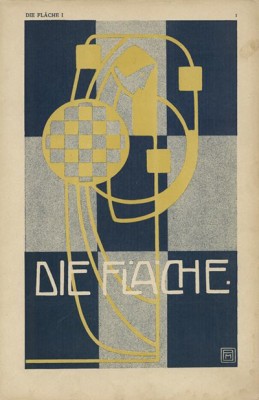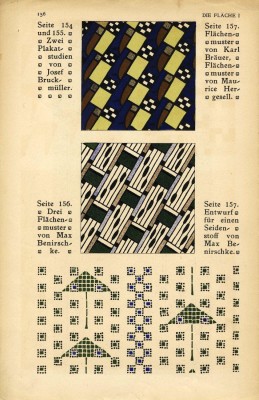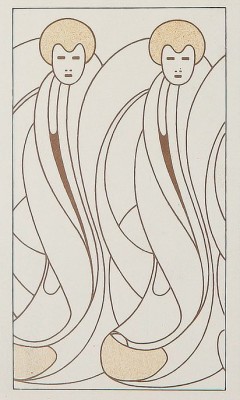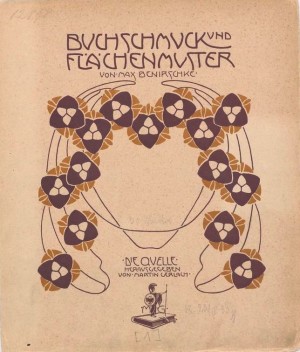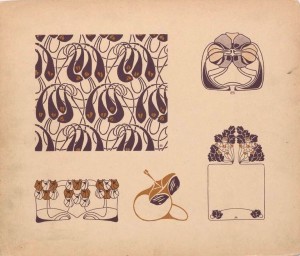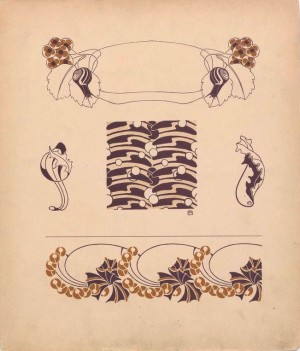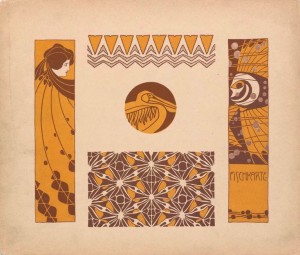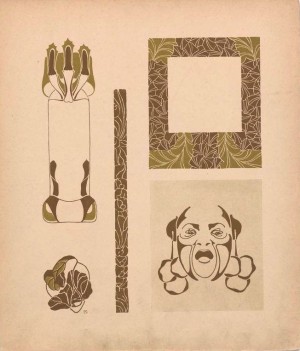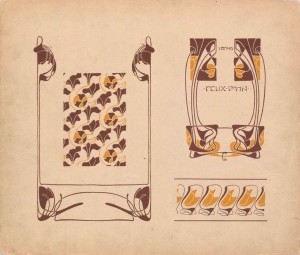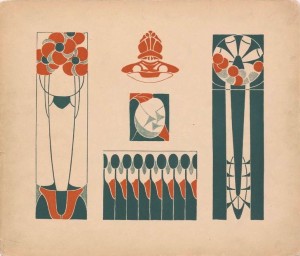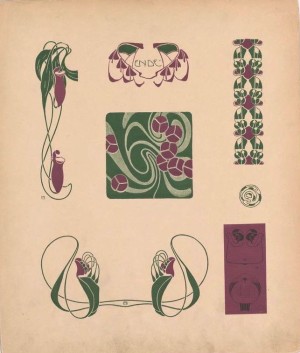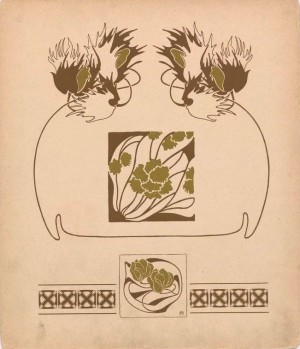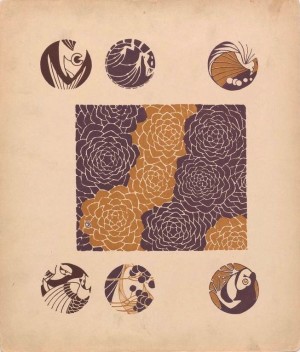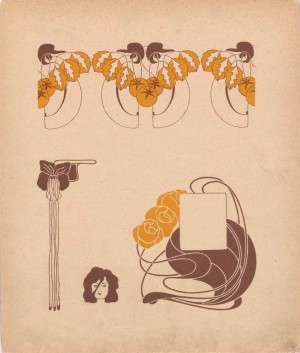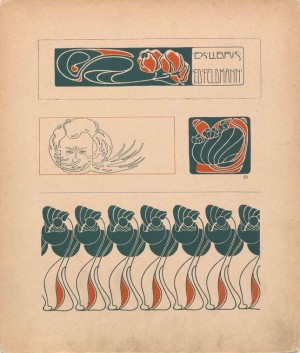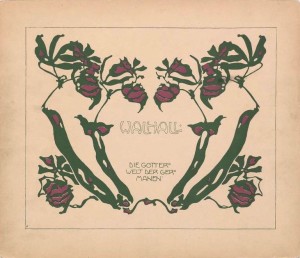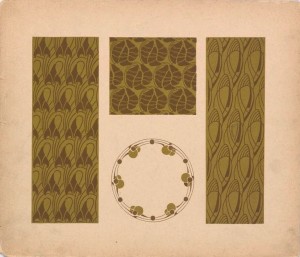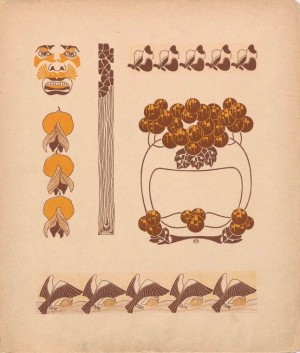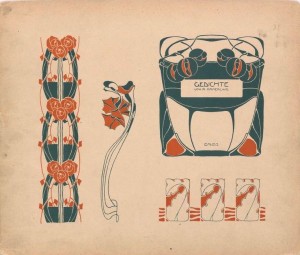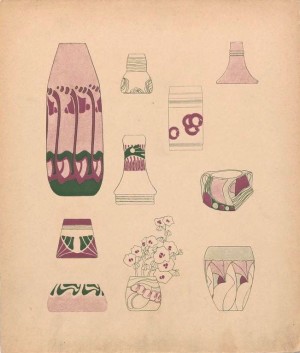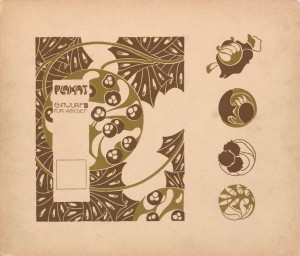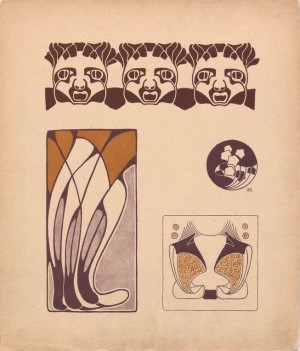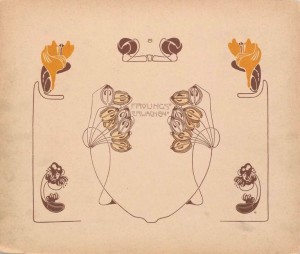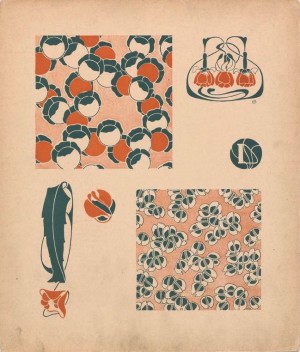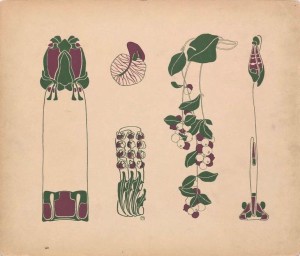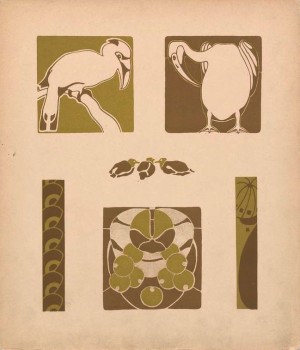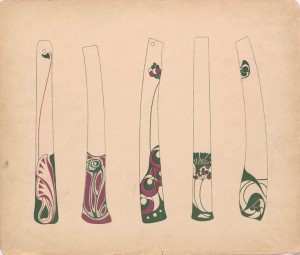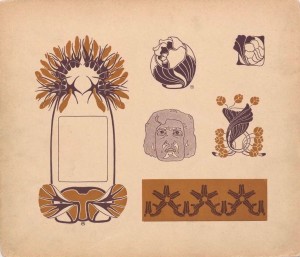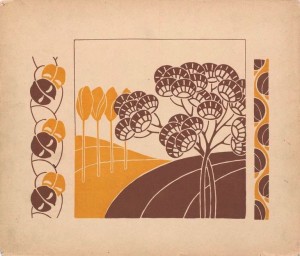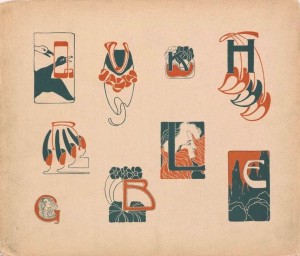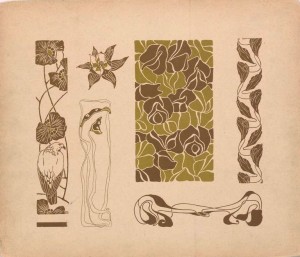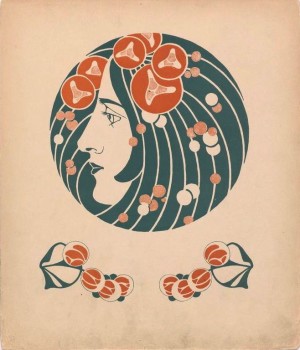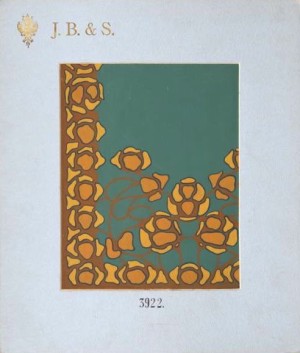Maximilian Benirschke (May 7, 1880 – September 28, 1961) was an Austrian architect , illustrator, and designer. He studied at the Kunstgewerbeschule (School of Applied Arts) in Vienna under Alfred Roller and Josef Hoffmann, who quickly recognized the 18 year old’s talents in pattern design and architecture. During this period, Benirschke contributed pattern designs, illustrations, and architectural drawings for magazines such as Ver Sacrum, Das Interieur, and Die Fläche. Benirschke also showed an early interest fabric design and contributed patterns for carpets, upholstery fabrics, and wallpapers of the company Backhausen & Söhne. His work caught the attention of publisher Martin Gerlach who hired him in 1900 to produce the folio Die Quelle- Buchschmuck (book decorations). Influenced by Belgian and French art nouveau styles, the folio shows Benirschke at the height of his Jugendstil period with a series of curvilinear plant motifs and patterns.
In 1903 the German architect Peter Behrens hired Benerische to teach at his newly founded School of Applied Arts Dusseldorf where he taught architectural drawing until the school’s dissolution in 1919. He then went on to teach at the Dusseldorf Art Academy until 1934 when the National Socialists withdrew his teaching and building license.
In 1904, Benirschke met the Austrian philosopher, architect, and esotericist Rudolf Steiner through his lectures. Impressed by his ideas on anthroposophy, Benirschke joined the Theosophical Work Group . After the war, he devoted himself almost entirely to the anthroposophical movement working alongside the artist and theorist Joseph Beuys.
- © MAK Vienna
- © MAK Vienna
- © MAK Vienna
- © MAK Vienna
- © MAK Vienna
- © MAK Vienna
- © MAK Vienna
- © MAK Vienna
- © MAK Vienna
- © MAK Vienna
- © MAK Vienna
- © MAK Vienna
- © MAK Vienna
- © MAK Vienna
- © MAK Vienna
- © MAK Vienna
- © MAK Vienna
- © MAK Vienna
- © MAK Vienna
- © MAK Vienna
- © MAK Vienna
- © MAK Vienna
- © MAK Vienna
- © MAK Vienna
- © MAK Vienna
- © MAK Vienna
- © MAK Vienna
- © MAK Vienna
- © MAK Vienna
- © MAK Vienna
- © MAK Vienna
- © MAK Vienna
- © MAK Vienna
- © MAK Vienna
- © MAK Vienna
- © MAK Vienna
- © MAK Vienna


